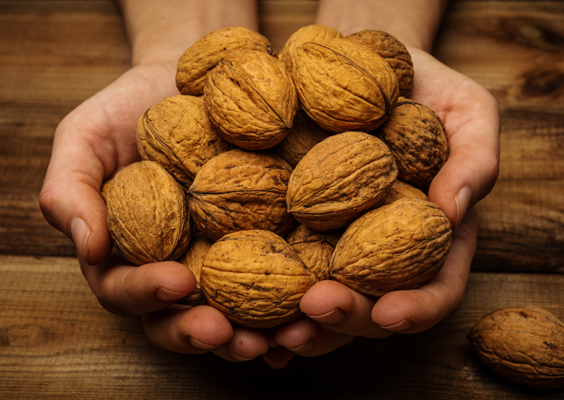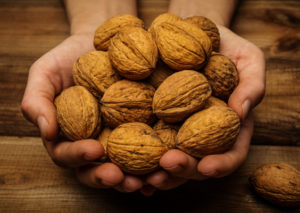Are you getting enough omega 3 essential fatty acids? Probably not … but you should be.
Most people don’t know that omega 3s are necessary for almost every part of your body to function properly – Including your heart, lungs, nerves, joints, eyes and brain.
And as I’ve told my patients for years, omega 3s are also effective at keeping cancer away.
That’s not something you’ll ever hear from your doctor.
But while your body desperately needs these essential omega 3 fatty acids, it can’t produce them by itself.
That’s why it’s critical to add omega 3s to your diet. But not all omega 3s are the same.
The three main forms are eicosapentaenoic acid (EPA), docosahexaenoic acid (DHA) and the often overlooked alpha-linolenic acid (ALA).
EPA and DHA are found in fatty layers of cold-water fish and shellfish. ALA is found in plants and nuts.
For EPA and DHA, I recommend that my patients take a combination of krill oil and squid oil.
Krill are small crustaceans found in all of the world’s oceans. Their small size and short lifespan mean they don’t to ingest a lot of pollutants.
A squid’s lifespan is also short. Plus, they live deep underwater, far from the toxins found closer to surface water.
For ALA, I import omega-3 packed Sacha Inchi oil from Peru for my patients. Packing more than 48% ALA, Sacha Inchi oil is one of the richest plant-based sources of omega-3 in the world.
I’ve also been telling my patients for years that a handful of walnuts a day is an excellent source of ALA … especially for cancer prevention.
Previous studies found that extract of omega 3-rich walnuts stopped the spread of breast cancer cells.1
In another study, the walnut-sourced omega 3 supplementation given to mice bred to have
breast cancer was able to prevent breast cancer from developing.2Now a new study reveals the cancer-fighting benefits of walnuts and omega-3 oils go beyond breast cancer.
The recent study, which looked at walnuts and colon cancer, showed that compounds in walnuts caused protective omega 3 fatty acids to congregate in the tumor cells of mice.
And the effect of these concentrated omega 3s was powerful. It reduced the inflammation of tumors and cut off their blood supply. In short, it slowed the growth of the tumors.
The study also found that the greater the amount of omega 3s, the smaller the tumor.3
That’s a big deal. Colorectal cancer is the second-leading cause of death in the West, just after lung cancer. An estimated 49,700 will die from the disease in the U.S this year alone.
Before the days of modern industry, we didn’t have to rely on things like walnuts to provide the omega 3s we need to fight off deadly diseases. Instead, we relied on the two best sources of omega 3s – meat and fish.
But the world has changed. Modern food-production practices have drastically depleted the amount of omega 3s in our diet. Meat and fish are now farmed and raised on an unnatural diet.
For instance, when we switched from grass-fed to grain-fed meat, we moved away from the natural diet of cattle. And that change led to a dangerous decrease in our consumption of omega 3s.
A recent study into the feeding systems of cattle showed that rump, strip, loin and blade cuts of grass-fed cattle had significantly higher levels of omega 3s than grain-fed animals.4
At the same time, our modern diet changed to include more omega 6 oils than ever before – thanks to the increased use of corn, soybean and sunflower oils in today’s processed foods.
Omega 6 oils aren’t necessarily bad for you, but they must be consumed in the right balance with omega 3s.
Historically, humans ate foods that had omega-6s and omega-3s in the ratio of about 2:1.
But the ratio of omega 6s to omega 3s in the modern American diet is about 15:1. This is an extremely unnatural and unhealthy ratio, and is linked to numerous disorders, including heart disease, cancer and inflammatory conditions like arthritis.
So, how do you get things back in balance?
First, return to the diet of our ancestors. You should eliminate or strictly limit your intake of sugar, grains and processed foods
Civilizations and societies may have changed over the past 5,000 years, but our anatomy and physiology have not. And our bodies did not evolve to consume any of these foods.
Second, always opt for grass-fed beef and wild salmon for abundant natural sources of omega-3 oils.
Finally, as a crusader against one of America’s biggest killers, I recommend walnuts to my patients – because these incredible nuts contain a sizable amount of alpha-linolenic acid (ALA).
And research from the latest study suggests walnuts – thanks to their high ALA content – may be a key ingredient in limiting tumor size.
So the next time you feel like a nut, make it a walnut.
1. Vanden Heuvel J, Belda B, Hannon D, Kris-Etherton P, Grieger J, Zhang J, Thompson J. “Mechanistic examination of walnuts in prevention of breast cancer.” Nutr Cancer. 2012;64(7):1078-86.
2.MacLennan M, Clarke S, Perez K, Wood G, Muller W, Kang J, Ma D. “Mammary tumor development is directly inhibited by lifelong n-3 polyunsaturated fatty acids.” J Nutr Biochem. 2013 Jan;24(1):388-95.
3. Tsoukas MA, Ko BJ, Witte TR, Dincer F, Hardman WE, Mantzoros CS. “Dietary walnut suppression of colorectal cancer in mice: Mediation by miRNA patterns and fatty acid incorporation. J Nutr Biochem. 2015 Apr 1. [Epub ahead of print] dx.doi.org/10.1016/j.jnutbio.2015.02.009
4.Ponnampalam EN, Mann NJ, Sinclair AJ. “Effect of feeding systems on omega-3 fatty acids, conjugated linoleic acid and trans fatty acids in Australian beef cuts: potential impact on human health.” Asia Pac J Clin Nutr. 2006;15(1):21-9.


